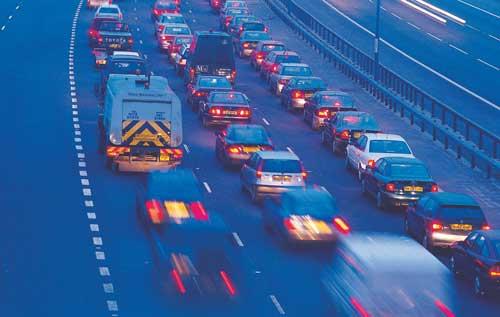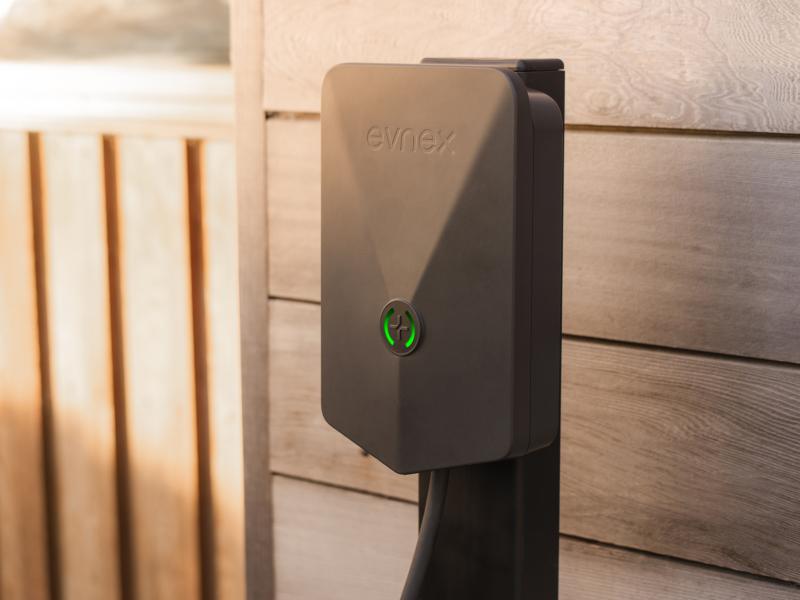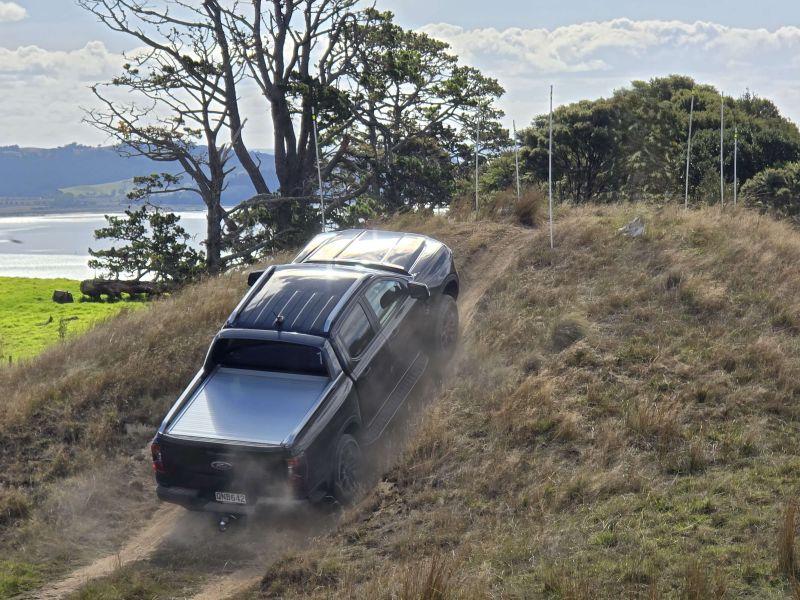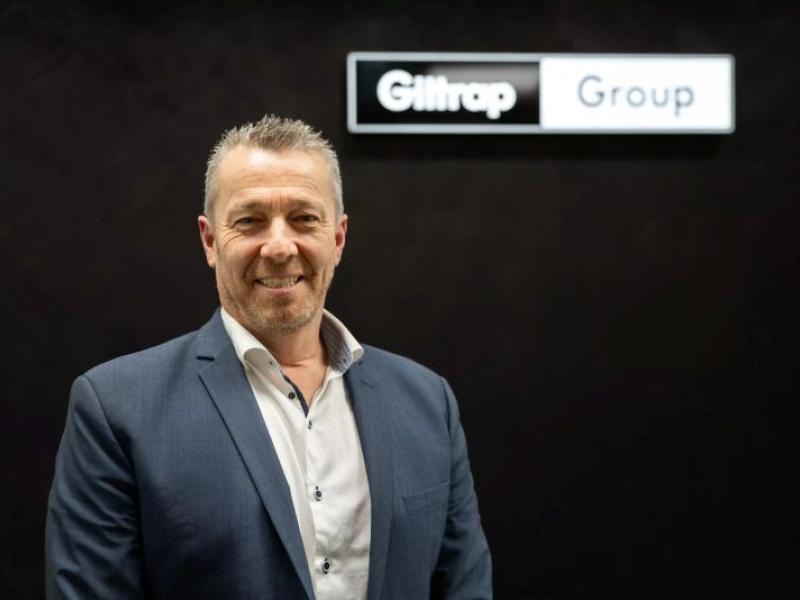Fleet strategy
According to the members of the leasing and fleet management industry I spoke to for this feature, more and more fleets are focussed on whole of life cost, and the environmental weighting or green factor has all but disappeared from the tender process.
SG Fleet managing director Geoff Tipene says vehicles being acquired today already have an environmental consideration as manufacturers produce products with smaller yet more powerful engines in the race to reduce carbon dioxide and other emissions - but locally the availability of petrol/electric hybrids and battery electric vehicles hasfailed to fire the imagination of fleet buyers.
A recent entrant into the fleet management scene, newcomer OptiFleet says that more than ever before people are focussed on cost reduction within their vehicle fleet, but some still have sustainability criteria to meet in their company policy when choosing new vehicles.
OptiFleet communications and media director Jessie Larsen says that the vehicles not only need to be fit for purpose and appropriately sized for fleet use, fleets also need to address the issues of regular maintenance, fuel efficient driving through driver training, as well as monitoring tyre pressure and not carrying unnecessary weight if they are to succeed in driving costs down.
“To run the fleet well you need to get a lot of little things operating effectively and working in perfect balance,” says Jessie. “Fleets need to balance the focus on being green against other priorities for the business, because the fleet is there to help to deliver results to the overall business strategy.”
SG Fleet trade operations general manager Bryce Grove says that consideration for fuel economy is a huge component in whole of lfe costs, and he feels that despite the situation around road user charges, modern diesel vehicles still have a role to play within the fleet market. SG Fleet recently placed a 2-litre turbo-diesel Hyundai i40 station wagon with a large fleet of more than 200 vehicles because, in Bryce’s own words, it ticked nine out of 10 boxes.
“As well as offering safety features and brand image, we calculated that the future fuel savings going from old technology petrol vehicles to new technology turbo-diesels such as that in the Hyundai would save the client more than $400,000 in fuel alone over the lease period,” says Bryce.
FleetPartners’ national customer service manager Vern McLaren says diesel vehicles remain popular because the attraction is a lower cost per litre at the pumps. But he warns that Road User Charges (RUC) and the hidden cost of administering the purchasing of them need to be considered.
“These vehicles have a higher recommended retail price which increases the amount of Fringe Benefit Tax being paid. He says: “On the other hand they travel further on a litre of fuel than petrol fuelled vehicles.”
In terms of sourcing wholly electric vehicles to lower fleet cost and emissions Vern McLaren says he is are not aware of many companies doing so.
“There are limited options in terms of wholly electric vehicles available for sale in NZ, while the Mitsubishi iMiEV has been available for some time, the Holden Volt and the Nissan Leaf have entered or are about to enter the market,” he says.
“The initial capital outlay is higher for electric vehicles. Range has certainly improved with the latest battery technology; however, this is also a negative as the resale of older technology vehicles plummets every time a new advancement is introduced.”
Orix sales manager Nigel Bell-Booth says that coupled with accurate WOL costing analysis during the vehicle selection process, Diesel vehicles and the advantages they offer primarily as a “green fleet” tool are considered in most comprehensive fleet reviews.
However, when considering a typical annual usage level, Nigel says that petrol vehicles still offer a significant cost benefit over the life of the vehicle, primarily due to the greatly improved fuel efficiency in modern petrol models, and considerable cost price advantage when compared to diesel vehicles.
Driver behaviour
The Kiwi attitude of “She’ll be right” no longer cuts it in fleet, and apathy is an unnecessary evil companies can ill afford when trying to lower fleet costs and emissions.
Many within the fleet management industry agree that it’s necessary for fleet owners to put the responsibility for keeping the vehicle in top running order back onto the driver of the vehicle, even if an incentive is necessary.
Nigel Bell-Booth from Orix says that even greater results can be achieved with lower level initiatives such as fuel consumption analysis, infringement management, and a robust vehicle inspection programme designed to identify those drivers with uneconomic or undesirable driver behaviour patterns.
Educating fleet drivers to ensure the vehicle is serviced at the correct oil drain intervals and that the tyre pressures are checked regularly is paramount to ensuring maximum fuel efficiency.
In association with Bridgestone New Zealand, SG Fleet says it has embarked on a programme to fill the tyres of its customer vehicles with inert nitrogen gas rather than air. Overseas case studies have proven that nitrogen filled tyres retain correct tyre pressure far longer than air-filled tyres, contributing to more-even tyre wear, longer tyre life, and greater fuel economy.
SG Fleet says it has offered a free vehicle safety check as well as the nitrogen fill up to all its customers through the Bridgestone Network, and for each vehicle that passes through the process; SG Fleet will donate $5 to charity.
Vern McLaren from FleetPartners says understanding which factors influence both safe driving and minimising risk is key to lowering fleet costs.
“Practical training courses that cover vehicle handling skills and defensive driving are available and there is plenty of choice with varying levels of complexity and cost,” he says. “Some industries and environments are more hazardous than others which is reflected in the varying levels of training those different customers and drivers undertake.”
TFS national fleet sales manager Darren White says that customers are looking at how technology can assist them with identifying uneconomical driving through platforms such as GPS. This gives the customer visibility around driver behaviour and provides hard data to assist with rectifying any issues.
Reviewing fleet performance
Making decisions on fleet strategy and procurement is becoming more complex and professional, according to Vern McLaren.
“Pressure on financial performance across most if not all industries is translating into pressure on procurement professionals, who through the current period of change need to not only deliver on an expected reduction in the total cost of ownership, but also to increasingly recognise the need to measure the value that suppliers bring to the relationship,” he says.
“Elevating the focus from purchasing to sourcing, supplier relationships, organisational alignment and ultimately a supply chain strategy ensure that all of the dimensions of any fleet decision are considered, from whole of life costs to emissions and the environment.”
Nigel Bell-Booth says with the GFC and its legacy still fresh in most companies’ memory, and the tentative recovery still very much in its infancy, cost management is a significant driver of fleet policy for company fleet decision makers.
He says that WOL costing allows companies to realise the total operating/ownership costs inherent in their fleet choices, and achieve greater value over the vehicle’s life.
TFS national fleet sale manager Darren White says the greatest driver behind fleet strategy depends on the type of customer because some customers focus on total cost of ownership (TCO) while others focus on environmental concerns and safety within the fleet. He says TFS works with customers to meet their requirements in all categories by analysing the customers current situation and providing recommendations to meet the customers overall fleet strategy.
“If a customer does not have a fleet strategy then we will develop and implement one for them,” says Darren.
He says different industries have specific requirements. For example, some customers may run more expensive vehicles to meet their safety requirements. But Darren suggests the focus should be to ensure that at all times the vehicle is fit for purpose.
The Auto LPG option
According to Contact Energy, more than 6,000 vehicles in New Zealand use Auto LPG, which makes a significant contribution to both lowering fleet costs and emissions. More than 10,000 tons of Auto LPG is consumed annually, and with the advent of more dedicated vehicles becoming available through Ford and Holden, this should continue to grow.
The company says vehicles that run on Auto LPG produce 14 percent fewer CO2 emissions than petrol vehicles. Auto LPG also produces lower levels of nitrous oxides compared to both petrol and diesel, and significantly lower levels of particulates than diesel.
According to Contact Energy, Auto LPG is the only locally sourced automotive fuel in New Zealand, although LPG occasionally may need to be imported at times of high demand. There is generally more Auto LPG supply available than the domestic market can sustain, and in fact it is now also exported.
Many fleet customers use a Contact Rockgas card to further enjoy the benefits of Auto LPG. The largest users are taxis, followed by couriers, security companies and other businesses that with high mileage.
The benefits of the Contact Rockgas card include exclusive promotions, it can be used at more than 200 service stations throughout the country, there are no transaction charges or annual subscription fee, the company sends out fully itemised statements monthly and the drivers name and car registration number are printed on the card for greater security and there is an option of including a PIN number for peace of mind.
Fleets using Auto LPG fuel cards may qualify for an interest-free loan of up to $5,000 to convert a vehicle to LPG. Loans are repaid through the Auto LPG Fuel Card account over 12 or 15 months. What is saved on fuel could even be enough to cover loan payments but conditions apply.
Fuel pricing comparison using an Auto LPG Fuel Card:
Retail Auto LPG $1.30 per litre
Fuel Card Auto LPG $1.11 per litre
Petrol (Nov) $2.09 per litre
Prices include GST.
The Fuel Card price was calculated on an Auckland based non-taxi rate plan using a minimum of between 301 to 500 litres of Auto LPG each month. The retail Auto LPG price displayed is based on retail pump prices displayed at Caltex Fanshawe Street, Auckland on 29 October 2012 at 7:20am.
The Fuel Card Auto LPG price per litre displayed above would also be two cents lower if our self-service site located at George Bolt Memorial Drive, Mangere, Auckland was used to refuel.
Auto LPG Fuel Card prices are worked out based on monthly volume usage and where the vehicle is refuelled. Prices are not directly linked to the retail pump price so Auto LPG Fuel Card savings compared to the retail pump price may vary at different sites.






